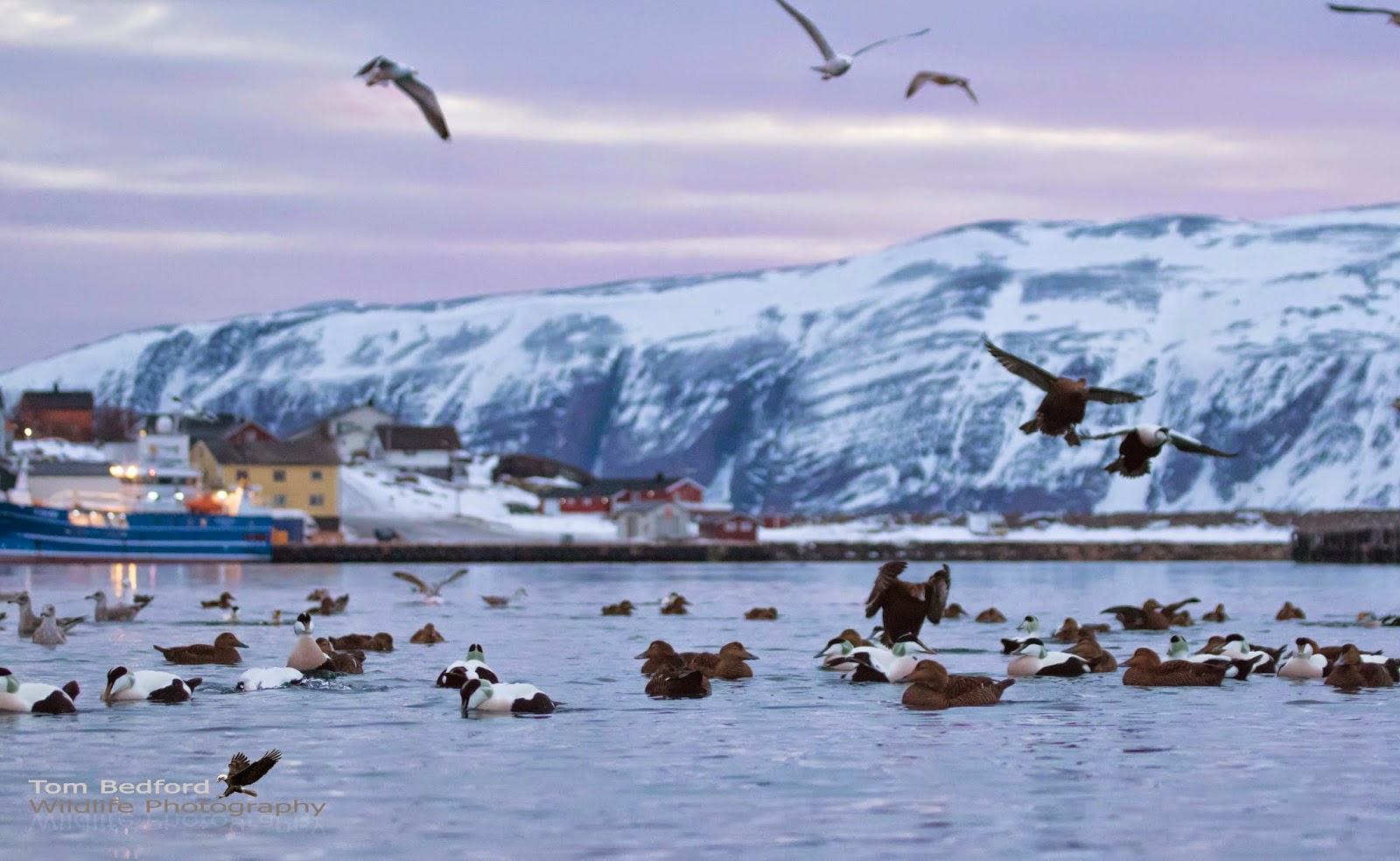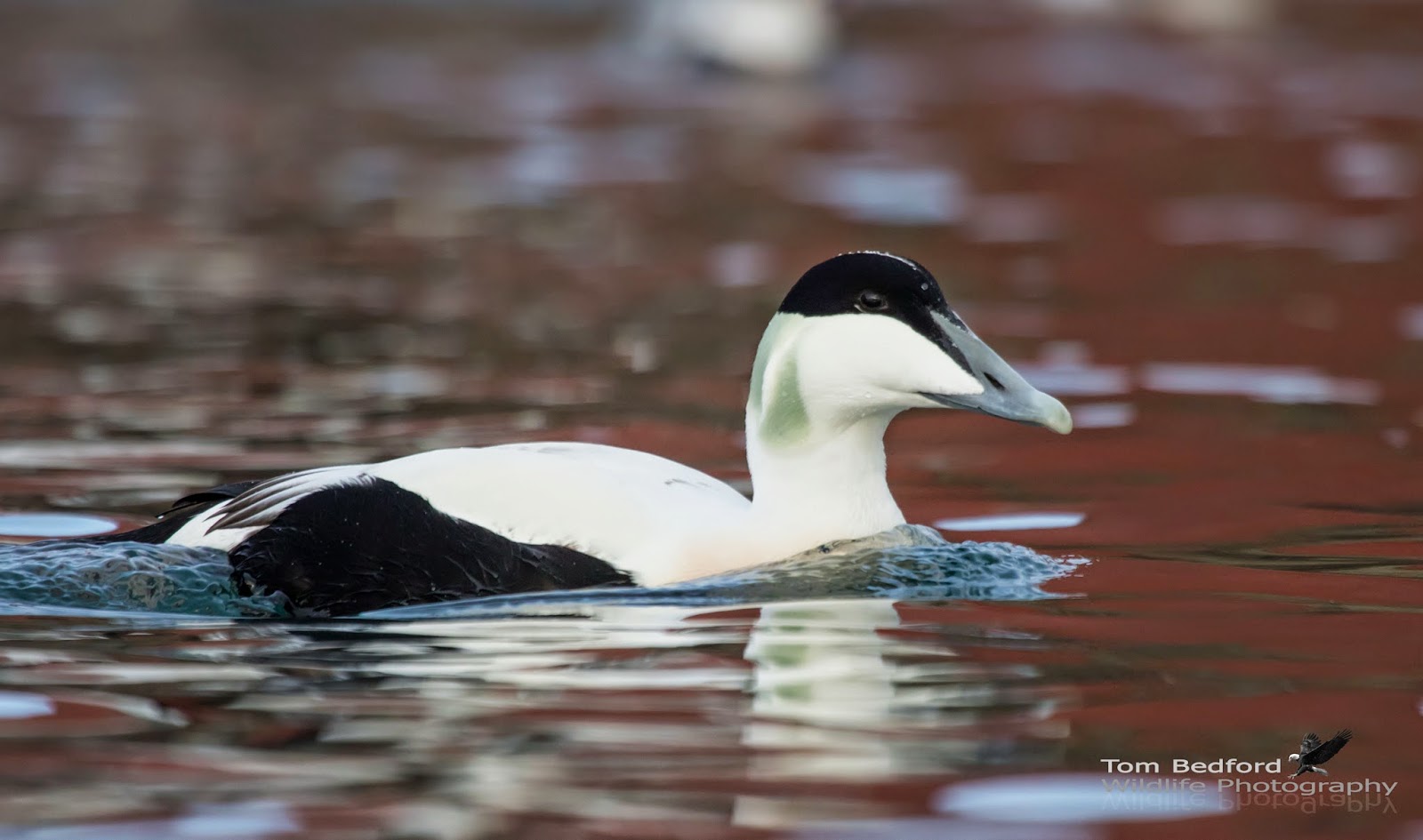Picking out a white bird in that white habitat was not going to be easy. Secondly, shortly after arriving on top of Båtsfjordfjellet, the weather closed in, an unpleasant combination of high winds, thick fog and blizzards. I didn't get out of the car, but turned around and descended back towards Båtsfjord. At lower levels, the weather was calmer, but I kept nervously looking behind me at the weather. Getting caught alone on the hills by that weather had all the hallmarks of a good mountain rescue story.
Fortunately I knew that the Ptarmigan would not be on the very top during the winter. I was looking for small lower valleys, ideally with dwarf birch trees that they could feed upon. I choose a random bend in the road, parked my car and set out alone into the snow, reassuring myself with Oates's last words: "I am just going outside, I may be some time".
I climbed the ridge above the road, took the picture below back towards my car and used the digital compass in the GPS settings in my camera. I decided I would walk east. Providing the battery lasted in my camera I felt I should be able to navigate back, even in a white-out. Probably.
Me on the ridge in full view-master mode. I then headed into the hills behind me in this picture:
After at least 45 minutes walking, having seen nothing but Reindeer, I dropped down into a small valley. This looked more promising. Unfortunately, a little snow blindness was creeping in. I was in an effectively overexposed habitat, without any eye protection. I noticed that I was missing my footing more often, as I failed to make out dips and crests in the snow. As I entered the valley, the snow was quite deep. Everything was acutely white. Everything that was except a strange, small black line some ten meters in front of me. What was that? I stopped, squinted and then threw myself down into the snow. A Ptarmigan was stationary in the snow, just in front of me! But the only thing I could make out was the black line joining the eye and the bill. The rest of the bird was pretty much invisible:
Looking through my camera, I realised I could see much more. I had found a male Ptarmigan, a white bird in a white-out! I cranked the exposure down, took some pictures, but the autofocus struggled with the lack of anything other than white to lock onto. I even tried a little video, hand held with a telephoto lens, so it is wobbly. But you can still see that everytime the bird turns it's head away from the camera, so that the black line between eye and bill is hidden, the autofocus goes hunting. Should have switched to manual focus, I know, I know:
Then, perhaps sensing my inadequacies in this environment, this fabulous male Ptarmigan, walked slowly behind a ridge...
... which cunningly hid the lower half of his body and tail and then took flight. As he wheeled away I caught a glimpse of the all black tail and then he was gone. What a moment. I was ecstatic. Mission accomplished, I followed my tracks back to the car and was back in civilisation within two hours, just before the weather closed in.






















































